Today reader Ian McKee, whose blog handle is 45Bravo, tells us about the Smith & Wesson revolver frame sizes. This first report is about the frame sizes that no longer exist.
If you’d like to write a guest post for this blog, please email me at blogger@pyramydair.com.
Take it away, Ian
S&W frame letters explained: Part One
by Ian McKee
This report covers:
- S&W Model 1
- Model 2
- Perfected
- Model 73
- Model I (pronounced “Model eye”)
- Last, but not least- the Model M (aka The Ladysmith)
- Summary
No revolver manufacturer can compete with Smith & Wesson for the diversity of the revolvers made. They range in size from the diminutive M frame to the monstrous X frame, and the “we did it just because someone else did” Z frame.
I mentioned in a previous blog I would do a deeper dive into the S&W frame letter designations. This is not an ocean-floor depth dive, just a snorkel dive to make you more familiar with the sizes and designations.
Choosing the right revolver can be difficult. The size, caliber and ergonomics all affect the “shootability” of the gun. What is right for you? Only you can decide, but this may help you understand what the different letters mean. And I threw in a little history along the way.
Before the alphabet there were actual model numbers. So let’s start with what’s no longer in production.
S&W Model 1
The first revolver made by Smith & Wesson was the Model 1, also known as the Top Hinge, and was made from 1857 through 1882. It was the first revolver to use metallic rimfire cartridges, and it was chambered in .22 short.
Once fired, the action was opened, and the cylinder removed and the short stub below the barrel was used to eject the spent cartridges from the cylinder.
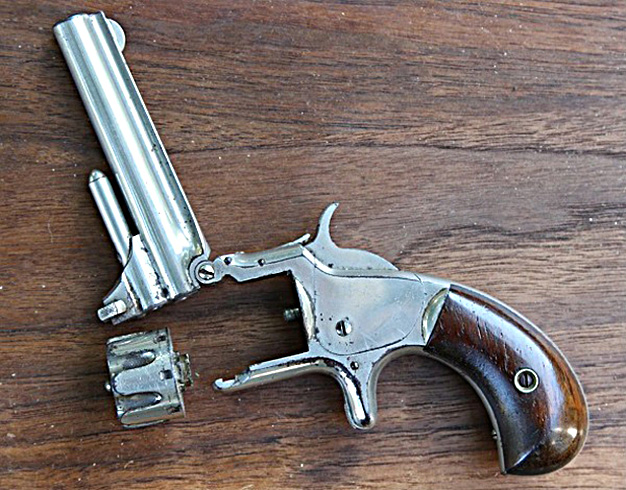
Model 2
The Model 2 also known as the Top Break was originally made in .38 caliber rimfire, and was still single action. The single action version was made from 1876 until 1911, the double action version was made from 1880 until 1913.
There were several calibers offered, and they were made for many countries around the world.
[Editor: I will step in here and show you a top break revolver that my late friend Otho Henderson bought at a gun show. It was a Smith & Wesson Frontier in 44/40 caliber. I reloaded for it and shot it. I wanted to buy it but at the time I didn’t have the money.]
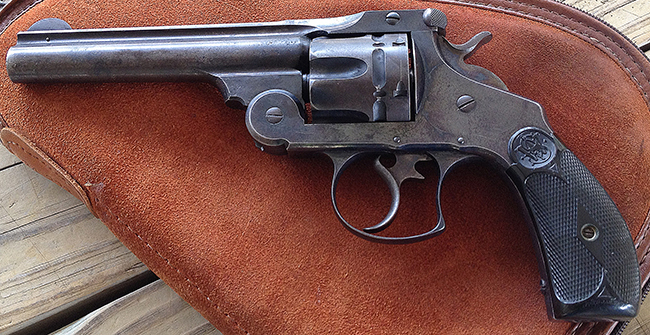
I reloaded for this 44/40 S&W Frontier top break revolver and shot it many times.
Perfected
The final version of the top break was called the “Perfected Model” and was made from 1909 until 1920. The action worked like the English Webley revolver where when the action was opened, the shells were extracted automatically.
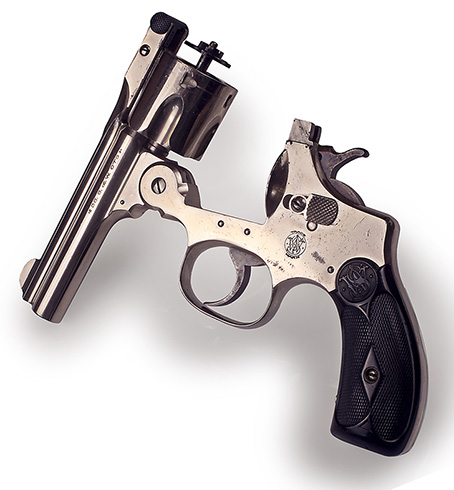
The perfected model, we see the same thumb release that S&W still uses to this day.
Model 73
The Model 73 designated the C frame was the only model with that frame designation. Made in .38 special, only 5000 were made for testing in 1973. Most were destroyed for safety reasons. There may be 20 in private hands today.
This was the pocket J frame modified to take a six shot K frame cylinder. It was the S&W answer to the Colt Detective Special.
It was made with an offset cylinder stop, which made it difficult to manufacture and test so it never made it past the prototype stage. Most of the 73’s that were produced were destroyed for safety reasons. It is estimated that less than 20 of them are in private hands today.
Model I (pronounced “Model eye”)
The first I (eye) frame was the .32 Hand Ejector, made in 1896. It was the first swing out cylinder revolver S&W made, and when opened you could press the ejector rod and eject the empty cartridges.
It used an unusual arrangement where the cylinder stop was built into the top of the frame, not the bottom where we are used to seeing it. The stop was released by a protrusion on the hammer that moved the stop when the hammer was cocked either manually or by double action.
Later models of the I (eye) frame relocated the cylinder stop back to where we know it now.
The early I (eye) frame morphed into a more modern design, and chambered in modern cartridges. But it was finally discontinued in 1961.
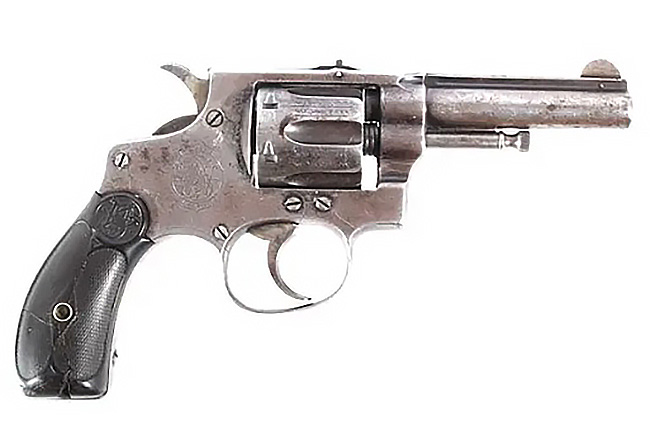
The first model Hand Ejector, The rear sight doubles as the cylinder release.
Last, but not least- the Model M (aka The Ladysmith)
Made between 1902 and 1921, they were a diminutive seven shot, fixed sight double action revolver chambered in the .22 S&W round (now known as the .22 long).
Because of their small size, they were very popular as a hideout gun as they were easily concealed.
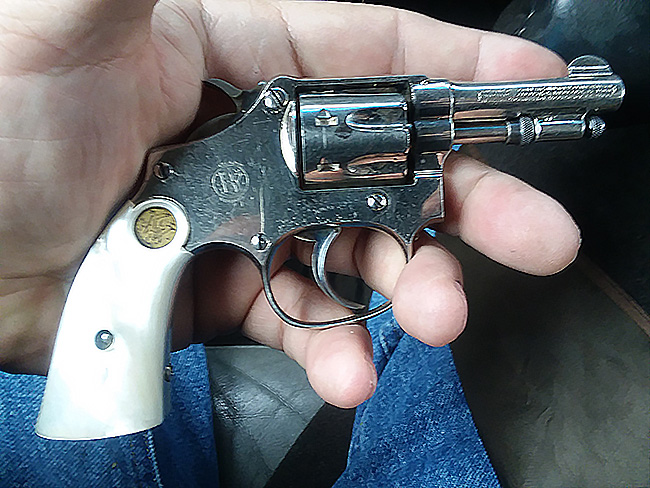
How’s this for a small frame revolver?
Over the years, many of the Model M pistols have been fired with .22 long rifle cartridges and the forums are filled with discussions about the revolvers having cracked forcing cones because of that.
I have no first hand experience with the Model M pistols, but looking at the ballistics may give us some insight.
The .22 long cartridge is listed as using a 29 grain bullet at 1038 fps, and 67 foot pounds of energy at the muzzle.
The .22 long rifle cartridge is listed as having several loadings ranging from 40 grain solids generating 131 foot pounds of energy to 30 grain loadings generating 191 foot pounds of energy.
That is a substantial increase in energy over the .22 Long loading, so there may be some validity to those forum posts.
Summary
That catches us up on the S&W guns that are no longer in production. In the next report we will cover the current production guns and their alphabet frame designations.
Shoot safe, and have FUN.
Ian
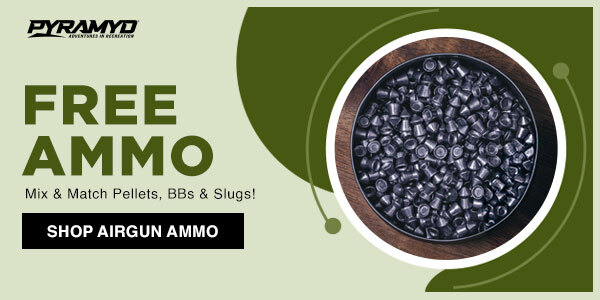
I noticed I have a place where I repeated myself.
I do not have the permissions to edit the blog, so maybe we can just let it ride for a few days.
Besides, it will give BB something to look forward to when he gets out of the hospital!
Sorry for the error.
Ian.
Ian it was an obvious error that couldn’t be you. No worries.
But I would like to know if those ballistics for the 22 long and 22 lr are relevant to snub nose revolvers.
That I cannot answer for sure, but most ballistic data is done with rifle length barrels unless specifically noted.
With the popularly of many new small pistols being chambered in .22LR, & .22 magnum, Many ammunition companies have started marketed loadings with faster burning powders designed for shorter barreled guns.
They even make faster burning .410 shotgun rounds for the handguns chambered in that cartridge. (The S&W frame that shoots the .410 cartridge is the Z frame.)
Ian.
Ian,
Thank you for an excellent report!
I knew about the “I” model, but this is the first I’ve ever read about the “M” model…very interesting! 🙂
Looking forward to your next report in this series,
dave
P.S. I hope you’ve heard from BB, and that he is OK.
Thank you Dave,
Yes his friend Steve sent me a text earlier today saying the surgery went well, but he was still pretty groggy.
I know we all are keeping him in our prayers.
When I hear more I will post it.
Ian
Ian, that is great news; thank you! 🙂
Ian,
Thank you for wonderful report. I am wondering though what sort of failures prompted the discontinuation and destruction of the existing examples of the Model C?
Siraniko
Ian,
Good Stuff! Seems like an interesting series of revolvers.
Dumb question, what are ” cracked forcing cones”.
Was the .32 caliber popular?
-Yogi
The forcing cone of a revolver is the rear of the barrel where the bullet jumps the gap between the cylinder where the cartridges are, into the barrel where the rifling starts .
It reduces the bullet diameter slightly as the projectile if forced into the rifling and centered into the bore.
It is the area that has the most stress of a revolver design, and is most likely to break.
If you open a break barrel springer air rifle, when you insert the pellet and fit it flush, you just inserted the pellet into a forcing cone.
Look closely next time you will see it’s slightly beveled to aid the pellet going into the bore.
Ian.
45Bravo,
Been thinking about your forcing cone break barrel airgun comparison all day! I understand why you explained it the way you did for Yogi and the Readership.
Nit Picking shootski, however, would like to point out that pellets are loaded into an often slightly relieved first part of the barrel (leade) that some incorrectly call the Chamber. In a revolver the Chamber is found in the cylinder and the barrel isn’t typically relieved. The Forcing Cone is to “correct” any mistimed/alignment of the current in battery Chamber and the barrel assisting the projectile on its quick trip to FREEDOM.
The cracked cones are the result of the battering they receive from a poorly built, smithed revolver, or maintained guns.
shootski
While I love airguns, my background and experience is from firearms.
Firearm barrels have a leade also, just ahead of the chamber..
I have always admitted I am not a springer guy but I am slowly embracing them.
Every break barrel springer I have ever owned I could see the rifling and feel the pellet head engaging the rifling.
With my limited experience in springers I considered that the barrel. Not a chamber as I inserted the pellet the process of engraving the rifling had started.
Yogi, to answer the second question yes the .32 S&W short was (and is) popular.
It was introduced in 1878 for their pocket revolvers. Generating about 100 ft lbs of energy.
The cartridge is still being produced today.
As to .32 caliber loadings in other cartridges.
I think their popularity is due to the light weight of the ammo, the low recoil and the accuracy.
Making it popular for much smaller guns for concealed carry.
The .32 acp cartridge has been produced in more handguns worldwide than any other caliber.
It has been in service with both police and militaries around the world since its introduction in 1899.
Some countries do allow their citizens to own weapons in that caliber where they are prohibited from owning guns in modern military cartridges.
Ian.
Thanks,
Once many moons ago I was held up at gun point. I believe the assailant had a subnose revolver, in .32 cal . I had once heard that if you are going to get shot, that would be the caliber to choose. I thought long and hard about reaching for the gun…
-Yogi
Yogi,
Interesting read and great photos: https://www.ssusa.org/content/how-to-avoid-revolver-forcing-cone-failure/
I don’t completely agree with the author although his points are valid. I doubt the author shoots cheap revolvers or poorly maintained ones so wouldn’t think that a Cylinders Chambers could be misaligned or mistimed ;^)
shootski
That Model M is so small it looks like a toy!
Has anyone ever shot one?
Ian
Thanks for the update on Tom. Prayers are still coming his way.
I have a S&W “Baby Russian” used by Pullman conductors. I can’t download pictures with my IPad but it is a 5 shot bottom break revolver in .38 and has the spur trigger. The last patent date is July 1871. I’m wondering if it comes under one of S&W model numbers or letters. It still functions but I will never shoot it.
Deck
Deck, Ian from Forgotten Weapons actually did a video Onondaga a few years ago.
Link below.
Ian
https://m.youtube.com/watch?v=UNTLxFFLOao
Siri got me. Ignore the gibberish..
Ian
Very informative video on the Baby Russian .38. I am surprised to learn this cartridge survived through WW2 in the Webley.
Thank you, thank you!
Deck
I can certainly understand why BB wanted that top break Frontier of Otho’s. Besides being an awesome revolver, it was Otho’s.
It is my hope and prayer we hear more good news of BB’s operation.
I agree with you 100%.
Good news about BB indeed – glad to hear them and yes, let’s keep going with the prayers.
Interesting report, more so for those who own S&W firearms – the history behind the scenes is pretty fascinating to the history nurds amongs us. Guilty! Also this is a good reminder to use the right ammunition in your firearm or suffer the consequences of not doing so.
Everyone,
Just spoke to Tom – the surgery went well, and there is a chance he will be heading home this afternoon. He asked me to tell everyone that he appreciates well wishes.
Thank you
Val
Val,
Thank you very much for the update!
Siraniko
Thank you Val. That is great news indeed and a big relief.
Bob
Val,
Super news on Tom.
Break out the SPARKLERS!
Thank you,
shootski
Thank you for the update Val.
Hope you have a nice day!
Ian.
Thanks you, Val!
Thank you for the update Val. Let’s hope for a quick and painless recovery.
Henry
45Bravo,
Thank you for the S&W hand cannon Guest Blog!
Always enjoy reading about S&W revolvers that i haven’t gotten to shoot.
Great job Ian,
shootski
Thanks Val.
BB hope you do get to come home today.
Hope all is well.
It sounds like BB is going to pull through this latest mess. Awesome!
This afternoon I took my Armada out to the range to see just what it was doing. I filled it to 3000 PSI and shot it across the chrony. At about 2500 PSI it reached the top of the curve and stayed there for almost three magazines. I’m impressed enough that I just might write about this.
By the way, that is 37.5 FPE.
By coincidence was paging thru the latest issue of the magazine published by our Big Box Wholesaler and there was an article titled “Kidney Stones.” Learned a couple of things and passing (no pun intended!) them on for whatever benefit this information may provide.
1-The typical person to get kidney stones eats mostly meat, fast food or processed foods which have high sodium levels and tends to dehydrate or drink mostly sodas and energy drinks.
2-There is a “stone belt” in the SE United States where there is a higher incidence of stones due to warmer/humid climates.
3-Kidney stones are more likely to affect people with a history of gallstones, hypertension, obesity and chronic kidney disease; women who are pregnant, those who have undergone bariatric surgery and people with inflammatory bowel disease.
The most important thing one can do to prevent stones is staying hydrated. Get enough citrate in your diet – from the juice of lemons and oranges; get enough calcium from foods such as yogurt, fortified orange juice, tofu, milk and chia seeds. Supplements can cause a risk of calcium buildup, however. Limit oxalate-containing foods such as spinach, peanuts, beets and chocolate but don’t cut them totally out of your diet. Cut back on sugar, salt and animal products.
Be well, be healthy, become and stay fit so you can keep on shootin’ and sharing your airgun knowledge for many years to come.
Readership,
Educational opportunity:
VanDerStok v. Garland
What is it really about?
https://www.americas1stfreedom.org/content/the-supreme-court-will-hear-another-firearms-case/
This is another case of the Administrative State that the Biden machine (and a few past USA Presidents) is pushing to undermine the Tripod the US Constitution is to be protected by. They warn of Trump wanting to be a tyrannical DICTATOR, but then every fox smells their own end.
The tyranny of the Administrative State is clearly shown by the EU bureaucracy in and from their Brussels offices in The Berlaymont building and a few other places.
Vote, but vote wisely.
shootski
PS: Although the NRA believes: “It is simply a way to further criminalize gun ownership in America.”
It is, in fact, a far WORSE power grab from you.
Thanks for the link shootski. Great timing also. Because tomorrow is Independence Day in the U.S. Perhaps everyone should take some time to contemplate exactly what the celebration represents. In other words, independence and freedom from what?
Ian,
I read this report thinking of the great and recently deceased Howard Fineman.
He once shared a story of a time he interviewed Jerry Lewis at his home. The subject of too familiar, even dangerous, fans came up. Lewis said something like, “I’m never scared I’ll get attacked because wherever I go, I carry this.” He then pulled an old .32 S&W or .38 S&W, snubnose “Lemon Squeezer” out of his pants pocket.
Fineman shared the anecdote when it was reported that Lewis had been taken into custody at LAX airport for trying to carry a handgun on a plane. Fineman remarked that the gun in question was probably that little Lemon Squeezer.
Michael